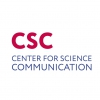Big science communication story in Russia born from a small networking coincidence
Alexandra Borissova and Dmitry Malkov share their experience of the Erice International School of Science Journalism organized annually by Ettore Majorana Foundation and Centre for Scientific Culture in Erice, Sicily, Italy and discuss the development of science communication in Russia boosted by their participation in the School back in 2014. Alexandra Borissova is a German Chancellor Fellow and visiting researcher in Science Communication at the University of Rhine-Waal, Germany. Dmitry Malkov is the Director of the Science Communication Centre at ITMO University in Russia.
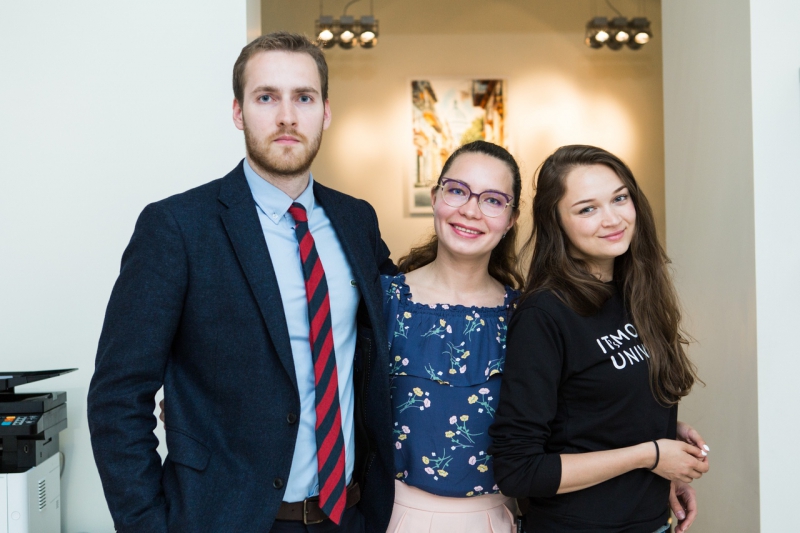
A.B. It’s been three years since my summer at the Erice School, and at the time I never imagined how it would change literally everything not only in my own career but also in the whole field of science in public in Russia. I fell in love with science communication after my first visit to CERN back in 2009. I was a young science reporter at that time, simultaneously doing my PhD in Physical Chemistry. The science journalists community in Russia was then rather small, with people often working part-time like me, but very motivated, independent and enthusiastic about their role in bridging science and publics. Indeed, researchers struggling with bureaucracy, lack of funding and seeking better models of resources distribution would start the debate and urge changes on the pages of one of many independent media outlets, such as (in alphabetical order) gazeta.ru, lenta.ru, polit.ru, trv-science.ru. These outlets, though often being ignored by the Ministry of Science and Education, were closely followed by policy-makers, and the ideas expressed there, produced a real impact.
This made me (in line with many other colleagues) truly proud of my work. Nevertheless, we could not ignore the significant gap in reporting about the local science news. Back in the 90's and 2000's university communication offices as we know them now did not exist at all. The communication office of the Russian Academy of Sciences — the flagship Russian research institution joining together around 97 000 researchers and scholars all across the country [1] - consisted of just 4 staff members, hence, covering only the agenda of RAS President and Presidium. A handful of larger universities (Lomonosov and Bauman universities, Higher School of Economics in Moscow and St. Petersburg State University) had small press offices, but these mostly focused their activities on student marketing, President Offices' agenda and processing journalists' requests for comments on news of general interest. As a result, a press release based on research, as ground for science communication activities, as it is, was not there at all. Science reporters were filling their columns with international research news adapted from EurekAlert or other major outlets. Despite the genuine interest, covering the work of local researchers without dedicated science communicators in the institution was logistically extremely complicated, in some cases even impossible. Sometimes obtaining a comment of an expert from NASA located thousands of kilometers and 10 time belts away was easier than getting in touch with a RAS expert sitting in some institute 10 kilometers away from you.
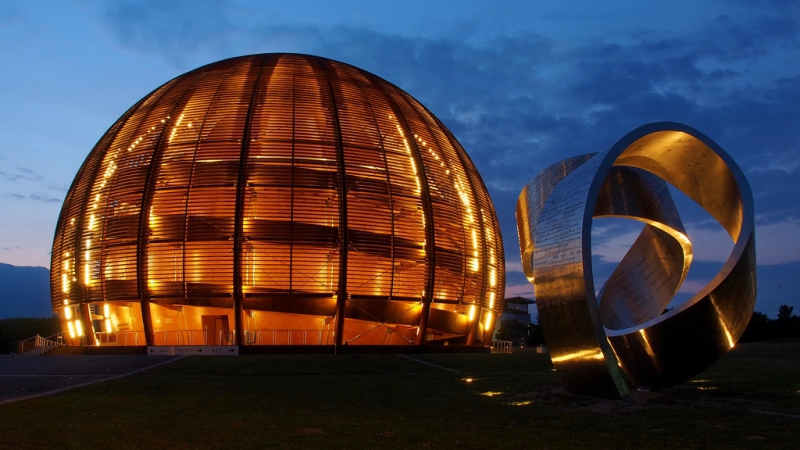
Learning about the work of communication offices at CERN, NASA, European and American research universities made me and some other colleagues at gazeta.ru, RIA Novosti and other media outlets strong advocates of installing such offices also in leading Russian universities (and, first and foremost, RAS), albeit working at least at the beginning purely in the paradigm of top-down approach of communicating science. We were ready to start that kind of work on our own having our enthusiasm and hands-on experience in mass media as a benefit and an absence of professional education as a strong drawback.
But it was not until late 2013 when I personally got an opportunity to make my dream of an ideal communication office come true. The launch of the so-called Project 5−100 — Russian universities excellence initiative finally helped to overcome the reluctance of academic management to move in this direction and the lack of funding that had been co-acting against SciComm development. It was first announced in 2012 by Russian president Vladimir Putin with the goal of five top universities entering top-100 of one of international academic rankings (THE, QS, AWRU) by 2020. 15 (later 21) universities were chosen based on competition and got both additional funding and strong motivation to intensify their publicity. Science communication was a part of it, and under these circumstances in January 2014 I joined the team of the Moscow Institute of Physics and Technology (MIPT). MIPT, though pretty young (founded back in 1946) is well-known for its strong expertise in physics, IT, engineering and educated the only post-Soviet Nobel Prize winners of Russian descent — Andrey Geim and Konstantine Novoselov (2010, discovery of graphene). As iconic as it is in the Russian scientific and educational landscape, MIPT never had a communication office, and it was my opportunity and challenge to create the system of both internal and external communications, in particular supporting the stronger research and academic image of MIPT in the international expert community. With a freshly acquired team of 10 people — writers, producers, designers, communications managers, cameramen — we took over the university bilingual website, corporate magazine and newspaper, press release production, work with mass media and training our own experts. These tasks, though massive and not easy, were clear and so was the way of accomplishing them. But to start international communications activities, we crucially needed more international networking and expertise. Seeking this, I came in summer 2014 to the Erice International School of Science Communication.
D.M. In 2012, I was in a position that can be best described as embarrassing. Shortly before graduating from my university with a degree in Linguistics and Philology, I realized that my attraction to natural sciences is meddling with my established career path. At the same time, I had very little idea about the inner workings of science, and not to mention science communication. But if I could not do science myself, I wanted to help scientists. In this regard, the idea that there is an entire profession, dedicated to advancing science by building bridges between science and society, looked very enticing to me.
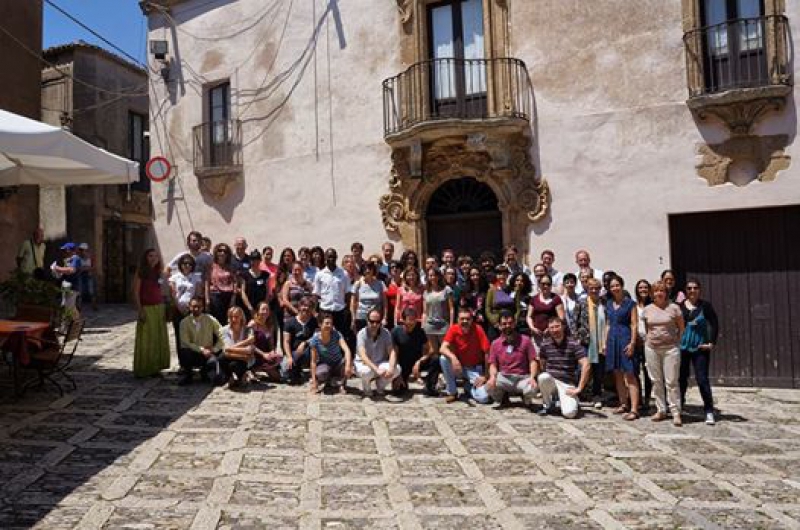
Given the embryonic state of Russian science communication at that time, I deceived myself into thinking that this profession was practically absent in my country. Although not completely accurate, this line of thinking got me searching for educational opportunities in science communication in Europe — there were none in Russia at that time for sure. Very soon I was packing bags to travel to Barcelona where I enrolled in a Master’s Degree in Science Communication at Pompeu Fabra University. None of my friends, nor my parents understood what I was going to study. But in the course of the following two years, I immersed myself in the vibrant environment of European science communication, where people discussed values, models and benefits of nationwide communication of science and technology. My programme had its own benefits and drawbacks, but the very experience of being in a place where knowledge transfer and communication mattered so much was life changing for me. I came to realize that science communication was not simply about making scientists explain themselves in layman’s terms — it was so much more and, most importantly, that it had a whole academic field of its own. Throughout my second year in Barcelona I worked as an exhibitions intern at the local museum of natural sciences and as a science writer for a European project. With this bundle of knowledge I came to the Erice International School for Science Journalism in 2014, which accidentally was to shape the course of my future career.
By sheer coincidence, in 2014 the Erice school saw its first Russian participants — 4 people and all at once. Or maybe it was not a coincidence at all, but rather a hint that the Russian community of science communicators was slowly maturing. I was eager to meet these people despite my feeling of cautious skepticism. After all, this was my first encounter with Russian science communicators. There I met Alexandra who amazed me with her prowess and desire to transform Russian science communication despite social and political barriers that seemed insurmountable to me. It was in Erice where I thought that I must go back home and apply what I know to the benefit of my profession. And it was also in Erice where for the first time I felt truly happy that I chose science communication as my career. What made me feel so special were, of course, the people — both the participants and lecturers — and to some extent the venue, which is located in an awe-inspiring place in Sicily.
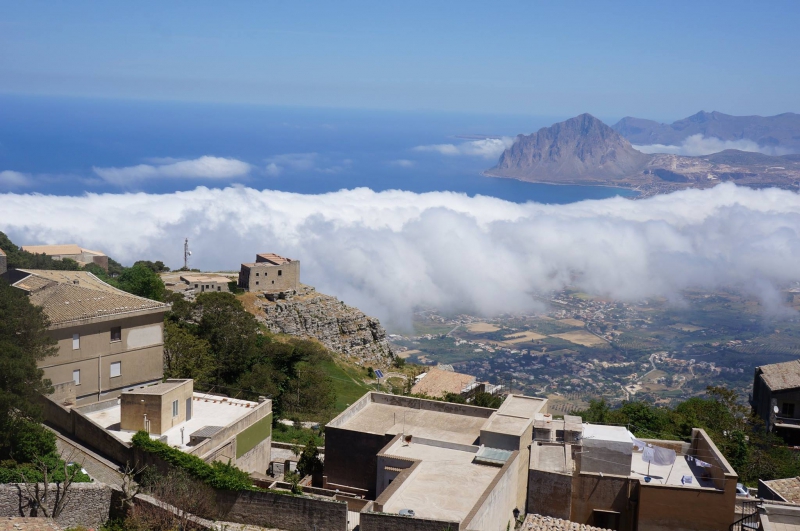
A.B. As it often happens (and as it, probably, had to happen) during really good events, in Erice I learned much more than I’d expected to. Lectures (and also a hands-on workshop by Fred Balvert) provided a good view on how to organize SciComm activities at a university and what were the ways to disseminate our knowledge nationally and internationally. With that I got more confidence on the direction I was steering my young, but proud ship. But the speeches delivered by Francois Fluckiger, Eleonora Cossi and Tommaso Dorigo were not less interesting. Francois Fluckiger, a prominent computer scientist from CERN, was speaking about the early days of WWW and the current challenges of the world and web. Eleonora Cossi and Tommaso Dorigo were showing two different sides of crisis management in science. Dr. Dorigo was the person who leaked the information about seemingly superluminal neutrinos detected by Gran Sasso lab in Italy and Ms. Cossi was the science communicator who had to deal with that developing story. This was the first time I faced the ethical vs. corporate values of a science communicator job and got to reflect on this seeing the situation from both sides. And I met Dmitry — the Russian who was in love with science communication as much as me, but, unlike me and everyone else, also had a professional training in this field.
D.M. Soon after Erice I made my choice and returned to Russia in 2014. Paradoxically enough, my formal science communication training was not of much help at first. Job opportunities were scarce and mainly located in Moscow. Word combinations such as "science communicator", "science journalist", "science public information officer" were simply not used by major employers. Perhaps it was somewhat easier, if you wanted to become a science journalist — there were already at that time several well-known media outlets that had dedicated science editorials.

But waiting for a job vacancy was useless, you had to take a more proactive stance and mingle with the community. Luckily, several initiatives appeared just in time to help many young and aspiring science communicators come together. One of them was Communications Laboratory — a project run by the Russian Venture Company (RVC), a major government fund of funds. The initiative was aimed at consolidating the professional field of science communication and reflected a very weak, but emerging political interest in the subject of science and technology dissemination (which were considered by RVC to be missing links in the Russian innovation system).
I briefly pursued a job at the Polytechnic Museum in Moscow, which was the only science museum in Russia with ambitious and big-scale renewal plans backed by the government. But eventually I decided to follow a job invitation that was made possible with Alexandra’s direct involvement. ITMO University, a relatively young technical university in Saint Petersburg known for its outstanding programming and IT school, was looking to expand its visibility on the international stage. As part of the same Russian academic excellence project as Moscow Institute of Physics and Technology, in 2013 ITMO University acquired a young and skillful communications team, which very soon sensed that science was severely absent from its communication efforts. As a science communicator I was supposed to fill this void at ITMO University.
A.B. And that was such a happy and lucky coincidence again! That brought me long time after to nearly existential thoughts on how fragile the chain of events is. In late 2014 through one of Project 5−100 networking events I met Anna Veklich, the then PR-director of ITMO University. A passionate communication professional and enthusiast of university excellence, she had no background in SciComm whatsoever, but with her true visionary instinct she felt its pivotal role in the overall communication of a research university. To cut a long story short, she just approached me and told: "Help us find a SciComm genius, you are the only person who can do it". And I suggested Dmitry, which was, as our history shows, not a bad idea at all!
D.M. A major motivation behind pursuing the job at ITMO for me was the promise that Anna Veklich gave me at the end of 2014. We discussed that building our own science communication infrastructure within the university was only part of the deal. Anna felt that there was a need for a full-fledged educational programme, such as a master’s degree, that would resolve existing staffing issues and further professionalize SciComm in Russia. As someone holding a degree in the field, I knew exactly what she meant and I also realized that this initiative could give a fresh impulse to academic studies in science and society. And that was a breakthrough moment for me and many of my colleagues who gave us their helping hand in the following two years.

In 2016, our commitment led to the launch of Russia’s first master’s degree in SciComm guided by the best international standards for SciComm training. Dozens of students from all over the country are currently on the way to becoming Russia’s first professionally trained science communicators (the demand for them exceeds all our expectations), 25 more will come on board by September 2017. And I hope that very soon they will take an active role in shaping the future of SciComm in Russia. What more could I desire for my field and how elusive this goal would have been had I not gone to Erice?
A.B. In 2016 the moment arrived to learn our Erice lessons yet another time. There we learned about professional self-organization and networking in the form of associations. Co-director of the School, Fabio Turone from Italy, shared his experience as a founder of SWIM — Science Writers in Italy association and underlined the importance of the collective voice of the community. The Russian experience back then resulted in two entities: Club of Science Journalists that existed in the form of a Yahoo.group and, though useful for internal discussions, had no representative structure, and "Intellect" association that represented Russia in the international platforms like EUSJA, but remained unfamiliar to many science reporters inside the country. We were, thus, pretty sceptical about our own abilities to self-organize. But we were very happy to be proven wrong already in 2016, when the need to discuss professional standards, share best practices and resolve controversial issues among science communicators became so urgent, that we happily founded AKSON — Association of Communication Professionals in the field of Science and Education. Though being still young, AKSON gained attention not only from university press offices, but also from science journalists and government agencies. And we are, once again, very grateful to our international colleagues from the World Federation of Science Journalists, EUSJA, SWIM, Australian Science Communicators association and many others who welcomed our effort and shared their hints and knowhow.
1. "Science and Technology Indicators in the Russian Federation, Higher School of Economics, 2013
